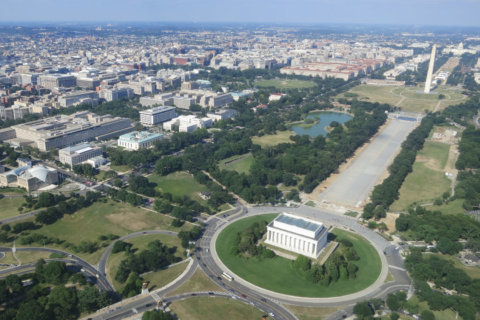The decision to bring employees back to worksites is being driven by local COVID-19 infection rates, schools and child care, and employee health concerns, according to a new survey of regional businesses.
The survey, “Capital COVID-19 Snapshot: Safe Return to Worksites,” is the third such study conducted by the Greater Washington Partnership to gauge how local businesses are responding to the pandemic.
“When we asked last year what the biggest drivers for organizations’ decisions regarding reopening were, the top answer was whether or not a there would be a vaccine available. Obviously, of course, today, we have multiple vaccine options available,” said John Hillegass of the Greater Washington Partnership, a consortium of some the area’s largest employers.
This latest survey found that over half of local businesses expect their employees to continue teleworking at about the same frequency over the next 12 months. It also found that on average, respondents expect 68% of employees to be back working on site by summer 2022.
When the Partnership conducted its last survey in December 2020, employers expected a higher number of workers — 75% — to be back on site on a typical workday by fall 2021. But the Delta variant and a spike in infection rates over the summer changed reopening plans.
“I think that goes to show that telework and remote work is becoming more entrenched into business norms,” Hillegass said.
And despite uncertain economic times, 45% of surveyed employers said they expect to grow their workforce over the next year, albeit at a slower pace than earlier predictions. In addition, four in 10 said they are struggling to find qualified employees.
As for vaccinations, the picture appears mixed. While employers are monitoring COVID–19 infection rates to guide their reopening plans, 46% of respondents said they did not expect to require employees to get the COVID–19 vaccine, while 54% will require employees to get the vaccine or submit to regular COVID testing.
Employers also estimated that 89% of their workforce was fully vaccinated — a figure that’s nearly 20 percentage points higher than state–wide averages in D.C., Maryland and Virginia for adults ages 18 to 64, according to the survey.
The survey was based on responses by 164 employers, representing more than 1,200 worksites and employing more than 290,000 workers across the capital region. It was conducted in September of this year.
- Sign up for WTOP alerts
- Latest coronavirus test results in DC, Maryland and Virginia
- Latest vaccination numbers in DC, Maryland and Virginia
Looking for more information? D.C., Maryland and Virginia are each releasing more data every day. Visit their official sites here: Virginia | Maryland | D.C.








